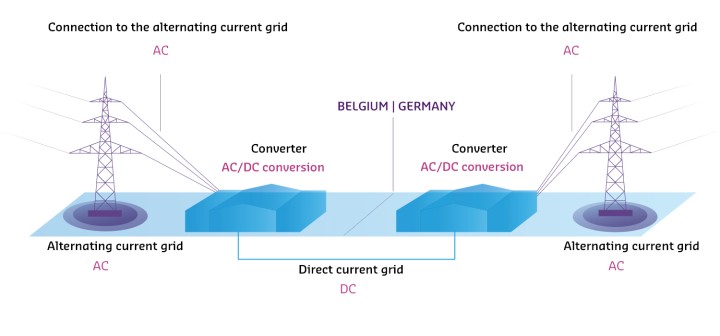Converter and converter stations

A converter is located at the points where DC and AC power lines are connected. It combines two functions: like the power supply unit (mains adapter) of a laptop, it converts alternating current to direct current. What’s more, it can also convert DC back to AC and then feed this into the transmission grid. Since the components and associated control electronics have to be protected against the wind and weather, this unit is housed in a hall. On the one side of this hall is DC current, on the other side AC current. Transformers on the AC side adapt the voltage to the 380 kV network.
The four functional blocks of a converter station
The structure of a converter station is similar to that of a substation – with portals, conductor connectors, pipe connections and transformers. A total of four functional blocks go to make up a converter station:
1. AC terminal
The AC terminal connects the entire converter station to a substation to which the overhead AC line is connected.
2. Converter
The heart of the station is the converter unit housed in the hall. This is where the current is converted from AC to DC or vice versa. A converter is made up of transistors, diodes, capacitors and reactors. In order to convert the current, the transistors are switched on and off alternately in line with precisely calculated patterns.
The transistors and diodes used are electronic power semiconductor devices that heat up during operation. To cool them, they are mounted on aluminium plates around which cooling water circulates. The heated cooling water, which flows in a closed circuit, is itself cooled by externally mounted cooling units.
3. Transformer
The converter is connected to the AC terminal by means of a transformer that matches the grid voltage to the input voltage required by the converter.
4. DC terminal
The DC terminal connects the converter station to the DC power line (overhead line or cable) that runs to the other converter station in the system.